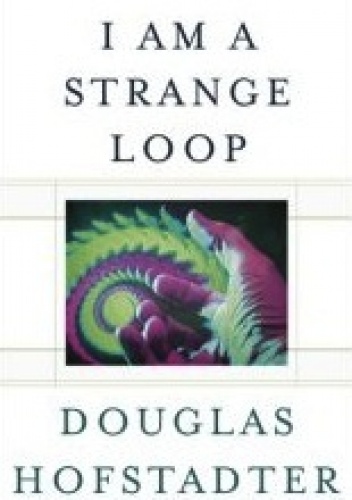
I Am a Strange Loop
Douglas Hofstadter
Best known for his Pulitzer Prize winning book, Gödel, Escher, Bach, published in 1979, Douglas Hofstadter continues his examination of self-referential systems in his latest book. Hofstadter felt a need to write a new book because so many people misperceived GEB as a hodgepodge of neat things with no central theme. I Am A Strange Loop attempts to correct this problem by better illustrating how inanimate matter can lead to animate beings with awareness and consciousness. By using the analogy of Gödel's Incompleteness Theorem, a mathematical system that looks at itself, Hofstadter shows how indirect mappings in the human mind can loop back on itself and produce an entirely new concept called "self". The "I" of selfhood, according to Hofstadter represents an emerging property of brainpowwer that, similar to Gödel's Incompleteness Theorem, loops back on itself and produces consciousness. I like Hofstadter's image of a video camera looking at itself to produce a swirling video pattern where images at the periphery of the images become part of the swirling pattern, thus part of the loop (the cover illustration gives an example of this). Human consciousness, too, transforms itself to whatever input it receives. Selfhood does not exist in a vacuum as a solitary thing separate from other selves. Instead, each of us incorporates a part of other selves, each contributing a part of the periphery of input, similar to a video camera looking at itself in a mirror. Thus we humans become part of our inputs, which includes other selves. Rather than thinking of selfhood as a different kind of self from other selves, we differ only by degree (albeit, a large degree). Much of Hofstadter's thinking coincides almost exactly with the philosopher, Daniel C. Dennett's view of consciousness. (Indeed, Hofstadter and Dennett have collaborated on several books together, and both remain friends.) Basically their view of consciousness consists of high level symbolic structures carried out by brain processing. Not only self awareness, but feelings and sensations come as an emerging property out of symbol manipulation. Thus, in principle, we may one day design a computer that has consciousness with all the feelings and emotions of a human. According to Hofstadter, consciousness (including selfhood, meanings, and feelings) depends on categorization of symbols; in other words -- patterns. And since pattern manipulation requires thinking, thinking equals consciousness! As Holfstadter says, "The basic idea is that the dance of symbols in a brain is itself perceived by symbols, and that step extends the dance, and so round and round it goes. That, in a nutshell, is what consciousness is." Although I agree with most of Hofstadter's hypothesis, I do not agree (or perhaps do not understand) that the feeling part of consciousness requires referential symbol manipulation. According to Hofstadter and Dennett, qualia (feelings, sensations, etc.) come about as an emerging property through neurological mappings at the symbolic level of the brain. In Chapter 20, Hofstadter gives an example of staring at a big broad sheet of pure, uniform color, lets say, purple, or a color of your favorite shade, entirely filling your visual field, and asks if you would experience the same rush as when you see that color in the petals of a flower blooming in a garden. Hofstadter doubts it because you would not experience all "the subtle shades, the delicate way each petal is curved, the way the petals all swirl together around a glowing center made of dozens of tiny dots..." Granted, one would not, but color (in my mind anyway) does not represent exactly a pleasurable feeling in itself, but rather a tag or a signal that identifies a particular light frequency pattern, no doubt, evolutionary important as it allows animals to spot colored fruit on a bush that could help it survive (or something similar to this). źródło opisu: Basic Books 2007 źródło okładki: Basic Books 2007
Szczegółowe informacje
Dostęp do plików ebook pdf i innych części strony jest dla zalogowanych użytkowników! Zaloguj się przez Facebooka lub zarejestruj się klasycznie sposób poprzez podanie swojego mail. Pamiętaj, aby podać poprawny adres e-mail!








